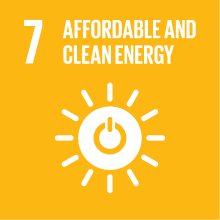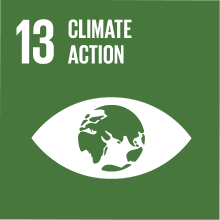Climate Finance
- Academic year
- 2020/2021 Syllabus of previous years
- Official course title
- Climate Finance
- Course code
- PHD149 (AF:342031 AR:181955)
- Teaching language
- English
- Modality
- On campus classes
- ECTS credits
- 6
- Degree level
- Corso di Dottorato (D.M.45)
- Academic Discipline
- SECS-P/01
- Period
- 2nd Semester
- Course year
- 1
- Where
- VENEZIA
Contribution of the course to the overall degree programme goals
Thus, finance plays a key role in making the low-carbon transition possible. A transition without the participation of the financial sector is hardly possible in today’s institutional setting.
However, there are many existing obstacles to make the redirection of financial flows happening in time and at a sufficient scale to meet the climate targets of the Paris Agreement. One of these obstacles is the underestimation by financial institutions and supervisors of the financial risks entailed by scenarios at more than 2 degrees or more and by scenarios of a low-carbon transitions that occurs in a disorderly way. An important related issue is the financial consequences for society as whole.
Hence two groups of questions arise. One the one hand, how can the financial sector contribute to climate change mitigation and adaptation and what are the investment opportunities? On the other hand, what are the risks for public and private finance and, ultimately for ordinary citizens’ savings?
Expected learning outcomes
Ability to discuss the main financial challenges arising from climate change for decision makers and risk managers
Basic knowledge of classification of economic activities in relation to climate change
Basic ability to manipulate economic data related to financial risk at the sectoral level
Ability to perform basic assessment of climate-related financial risk using input from established climate finance risk models and climate economics models.
Pre-requirements
Background in climate change (this PhD program)
Ability to carry out data analysis using electronic spreadsheet or programming languages
Contents
Climate economics. Notions of carbon budget versus social cost of carbon. Taxonomy of modeling approaches. Integrated Assessment Models (IAM): optimal policies versus cost-effective transition pathways. Analysis of standard Nordhaus’s DICE model and critiques by Pindyke and Weitzman. The debate on policy relevance of climate economic modelling. The debate of the discount factor.
Transition risk. Value chain of energy and green-house gas (GHG) emissions throughout economic sectors. GHG accounting methods Scope 1-2-3 and their limitations for climate risk assessment. ESG ratings and their limitation for climate risk assessment. Climate risk assessment requires analysis of firms’ technology profile.
Classifications of economic activities in relation to climate risk. Traditional classifications for national accounting (ESA2010, NAICS, NACE Rev2) and their limitations for climate risk disclosure. Classification method of Climate Policy Relevant Sectors (CPRS). Example: analysis of exposures to CPRS across EU financial sectors.
Working with data relevant for climate finance: GHG emissions data at sector level and firm level. ESG data versus climate-relevant data. Working with information from main data providers: BvD, Bloomberg and Thomson Reuters.
Finance and the main developments on international cooperation about climate change. The United Nations Framework Convention on Climate Change (UNFCCC), the COPs conferences and the (possible) role of the financial sector for the success of climate mitigation.
The 2015 Paris Agreement. Recent developments in policy and practice relevant to financial investing. Climate policies, regulation and its impact on financial risk and investment objectives. G20 Financial Stability Board Task Force on climate-related financial disclosure (TCFD): guidelines and implications. Market-based and non-market solutions to climate mitigation.
The Network of Financial Supervisors for Greening the Financial System (NGFS): key messages from 2019 and 2020 reports. Climate change and financial stability: climate change and central banking: the debate on the role of monetary policies. Green supporting versus brown penalizing factors.
From IAM climate policy scenarios to financial risk: how to leverage on the knowledge from IAM trajectories to derive financial shocks from trajectories. Financial risk associated with disorderly transition scenarios. Structure of IAM scenario databases, exploring IAM transition scenarios through online tool. Notion of Shared Socio-economic Pathways.
Basic notions on risk metrics and coherent risk metrics: Value at Risk, Expected Shortfall.
Application to corporate and sovereign bonds: adjusting financial valuation metrics and pricing for climate policy shocks: climate spread. Risk metrics adjusted for climate policy shocks: scenario-conditional Climate Value at Risk. Application to climate risk assessment for example financial portfolios.
Risk management issues. Decision under uncertainty. Rethinking the conceptual framework: climate financial risk as a problem of financial risk management under uncertainty.
Referral texts
Selected introductory references
• Battiston, S., Mandel, A., Monasterolo, I., Schütze, F., & Visentin, G. (2017). A Climate stress-test of the financial system. Nature Climate Change, 7(4), 283–288. https://doi.org/doi:10.1038/nclimate3255
• Battiston, S. (2019). The importance of being forward-looking: managing financial stability in the face of climate risk. In Financial Stability Review Banque de France, June. https://www.banque-france.fr/sites/default/files/media/2019/08/27/financial_stability_review_23.pdf
• Network for Greening the Financial System First comprehensive report 2019 https://www.ngfs.net/sites/default/files/medias/documents/ngfs_first_comprehensive_report_-_17042019_0.pdf
Assessment methods
Homeworks
Written exam (online depending on UNIVE regulation regarding COVID) consisting of multiple choice test and exercise
Type of exam
Teaching methods
Exercises
2030 Agenda for Sustainable Development Goals
This subject deals with topics related to the macro-area "Climate change and energy" and contributes to the achievement of one or more goals of U. N. Agenda for Sustainable Development


